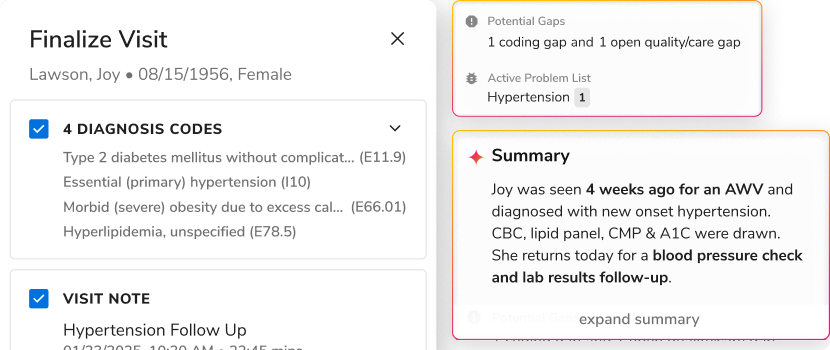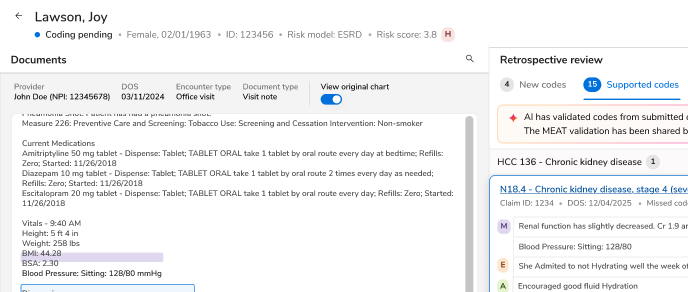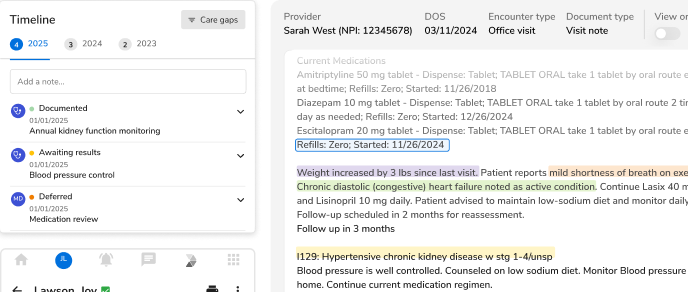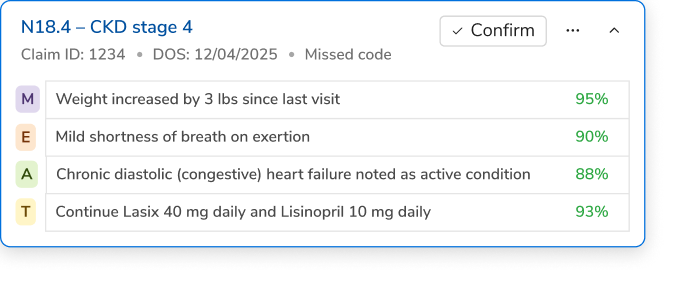The Role of AI and Predictive Analytics in Population Health Management


Leveraging AI and Predictive Analytics for Population Health Management
Considering the present-day scenario, the ability to predict care, out of everything, could change the way we view healthcare. Especially as healthcare moves to put quality at the forefront, predicting care for every single patient could be a huge plus.
Most of the risk models available today do have accurate predictive abilities at a population level. However, when it comes to an individual patient, the predictive algorithms are vague. And to drive predictive and prescriptive efficiency in healthcare, it’s going to add a little more!
Healthcare organizations are now using AI and data analytics to address the full spectrum of factors that influence population health. This has led to enhanced strategies for managing community health, personalized patient care, and optimization of resource allocation.
Let’s explore how employing AI for population health management is transforming the healthcare landscape.
How AI Can Enhance Outcomes in Population Health Management
Healthcare professionals juggle with too many tasks at the same time. Because of extensive administrative obligations, they are working beyond reasonable hours. This is where AI comes into the picture and how it can save time and help to improve patient care and quality of life.
With AI coming into the picture, care has shifted from reactive disease- and treatment-based to proactive prevention. Trillions of data can be examined, helping patients to gather their historical data based on the Social Determinants of Health or, other non-medical factors that are increasing that person’s adverse outcome risk and help them to identify the illness before thus helping them in the journey of cure.
This enables rapid pattern recognition, which would otherwise in manual pattern would take years to be recognized.
AI’s Role in Automating and Enhancing PHM Processes
As AI continues to enhance patient experience, it also alleviates multiple problems that would have been time-consuming and challenging for many hospitals. For instance, AI is assisting hospitals in overcoming obstacles by assisting in the improvement of 30-day readmission rates, identifying high-risk patients, as well as disease risk management.
For better care coordination, AI also helps in remote patient engagement, which enables the participation of patients, without them having to visit physically.
With a focus on value-based care, the Innovaccer platform and its PHM solutions are tailored to advance clinical, financial, and operational performance.
These devices track various health metrics by transmitting the data directly to healthcare providers. The system can automatically alert physicians when necessary.
While remote monitoring devices and data transmission are crucial first steps, it's the top population health management platforms that transform this raw data into actionable insights, enabling healthcare organizations to deliver truly proactive, value-based care.
Predictive Analytics in PHM: A Game Changer
The true power of predictive analytics lies in its ability to analyze vast amounts of patient data – from clinical records and medical histories to social determinants of health—to identify patterns that may indicate potential health risks before they escalate into expensive complications.
For example, healthcare organizations use these predictive and AI-driven patient engagement tools to identify patients at high risk within value-based contracts who might require intensive care or are at risk of hospital readmission.
By proactively managing these patients through early interventions and personalized care plans, providers can significantly reduce unnecessary hospitalizations and emergency department visits.
The effectiveness of these interventions is measured through improved patient outcomes, reduced healthcare costs, and better compliance with care standards, ultimately helping providers achieve their value-based care targets while ensuring quality care delivery.
The Role of AI and Predictive Analytics in Improving Care Coordination
By enhancing clinical decisions, automating administrative tasks, and improving patient outcomes, AI is on the journey of transforming healthcare. AI helps enhance predictive analytics and operational efficiency, which results in delivering timely, accurate, and effective care.
One of the extensions of AI in healthcare is the AI scribe, which plays a pivotal role in care coordination and workflow improvement.
Using predictive analytics for value-based care helps in automating documentation by generating real-time notes, allowing healthcare providers to focus more on patient interactions and less on administrative burdens.
These clinical notes help in reducing clinician burnout and improving overall productivity and allow the care team to communicate effectively, ensuring that everyone involved in the care journey of the patients has up-to-date information.
This improves transitions of care, reduces redundant tests, and fosters better collaboration among specialists, nurses, and other healthcare providers.
Key aspects of AI scribe solutions that can enhance care coordination:
Patient engagement- The system automatically sends notifications to the patients about scheduled medications, upcoming appointments, or the follow- up visits. This helps in reducing any care gaps or overlooked care opportunities.
Clinical Alerts- This helps in sending real-time alerts to the clinicians, notifying them about any changes in the patient's condition. These alerts thus help in better care coordination and timely interventions.
Example: Predictive tools that help providers manage high-risk patient groups in value-based contracts.
Value-based care models incentivize healthcare providers to improve care delivery by tying reimbursement to care quality. While value-based care holds providers more accountable for patient health outcomes, it also affords them the resources and time needed to improve care quality.
Population health management tools
Population health management tools can help providers identify patient needs through data collection. Providers can use population health management tools to aggregate and analyze data to inform decision-making. With a population health platform, healthcare practices can identify high-risk patients and generate targeted interventions. Not only can this improve health outcomes, but it can save patients and providers money by avoiding potentially costly treatment.
Data Analytics Platform
With data being such an essential part of value-based care, providers must leverage technology that converts information into actionable insights, like healthcare data analytics tools. Data analytics fall into four categories: descriptive, diagnostic, predictive, and prescriptive.
Data Source: Electronic Health Records, Insurance Claims and Social Determinants of Health
Types of Data: Clinical Data, Lab results, Demographics, Health utilization, costs, outcomes, Income, education, housing, geographic data
Challenges in Implementing AI and Predictive Analytics in PHM
Healthcare organizations often struggle with compatibility issues between AI systems and their existing infrastructure, particularly when dealing with legacy systems.
One key issue is the complexity and variability of healthcare data. Integrating data from multiple sources—such as electronic health records, wearables, and social determinants—can be difficult due to differences in data formats, quality, and completeness.
Additionally, predictive models can be prone to biases if the underlying data are not representative of the diverse populations served. This can lead to disparities in care, where certain groups might be overlooked or misclassified as lower-risk. Another challenge is the need for healthcare providers to trust and understand the outputs of predictive models.
The "black box" nature of some advanced algorithms, such as deep learning, makes it difficult for clinicians to interpret and act on predictions without a clear understanding of how they were generated.
The Future of AI and Predictive Analytics in Population Health Management
Through data-driven predictions, healthcare is shifting from reactive to proactive, enhancing patient care and overall quality. By actively integrating AI and predictive analytics in future PHM trends, advanced analytics, and modeling, healthcare providers can forecast patient needs, spot emerging health trends, and create personalized interventions. It also strengthens risk management, allowing organizations to prevent adverse outcomes and improve care. In this article, we will investigate the transformations predictive analytics have to offer for the healthcare industry.
Achieve better care at lower costs with Innovaccer’s Population Health Management

.png)





.png)









.svg)
.svg)

.svg)

